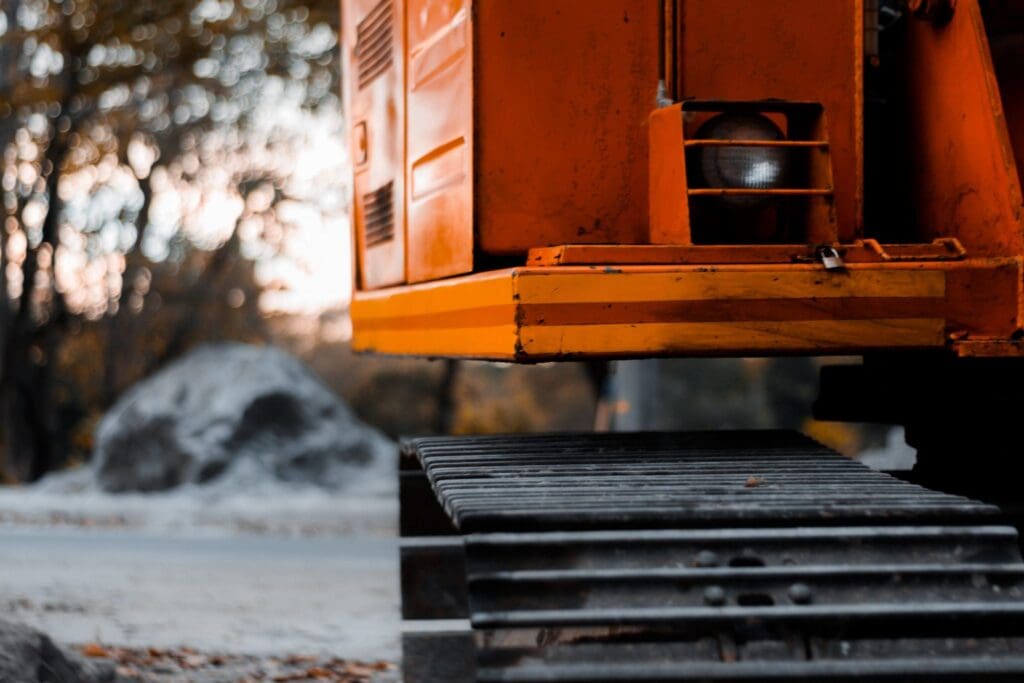Whether you work in construction, demolition, or forestry, investing in quality equipment is key to minimizing downtime, reducing repairs and replacements, and maximizing efficiency on the job. It also helps you complete projects properly while keeping workers safe.
An excavator is a piece of equipment you’ll need for everything from digging and mining to lifting and dredging. Want to learn more about how to choose the right excavator for your application? Check out the guide below.
Table of Contents
What Is an Excavator, and What Is It Used For?
An excavator is a type of heavy equipment used in construction and other industries. These machines come in many shapes and sizes and are used for tasks such as digging, lifting, carrying, mining, dredging, forestry, and demolition.
The average excavator features a boom, arm, bucket, and a cab that rotates above an undercarriage containing either tracks or wheels. Some excavators also include specialized tools designed for particular applications, such as hydraulic breakers, cutters, shears, grapples, and couplers.
Types of Excavators
The type of excavator you need depends on factors like the application at hand, the terrain involved, and how much space is available. Here’s a breakdown of the main excavator types along with their features and intended uses.
1. Crawler Excavator
Classified as a crawler due to its slower speed, a crawler excavator is ideal for digging, landscape grading, and mining. It’s also called a standard excavator because it’s one of the easiest to operate and most used on job sites. This particular type of excavator operates well on both smooth and rough terrain.
2. Wheeled Excavator
Wheeled excavators operate best on job sites involving hard, flat surfaces, although they also work well on steep slopes and hills. They travel faster than crawler excavators because wheels move faster than a track system.
3. Dragline Excavator
Dragline excavators are great for digging, particularly in underwater settings such as harbor construction. They’re also effective for deep pile driving, road excavation, deep excavation, and surface mining and can dig to a minimum of 213 feet. Due to their large size, dragline excavators are not recommended for small or mid-sized projects.
4. Suction Excavator
Designed for underground projects, debris cleanup, and digging fragile materials, suction excavators target a specific area without disrupting the surrounding area. That’s because they’re equipped with a 30-centimeter suction pipe to extract the material.
5. Mini Excavator
Also called compact excavators, mini excavators are smaller and lighter than other excavator types, making them easier to operate and transport between job sites. They can be used on softer terrain without damaging the ground or pavement below. They’re ideal for projects that are either smaller or located in a tight space and involve minimal lifting and carrying. These excavators are easy to maneuver in small spaces and are more energy efficient than other models since they require less fuel.
Excavator Safety Tips
6. Hydraulic Shovels
Hydraulic shovels are designed for mid-sized to large mining and digging projects. The shovel features a powerful engine and a large bucket that makes job site cleanup faster and easier.
7. Skid Steer Excavator
Skid steer excavators are effective for clearing pools, removing debris, and clearing construction sites. They’re not recommended for snowy or muddy terrain because they operate on wheels, which provide less control over the machine.
8. Knuckle Boom Excavator
A knuckle boom excavator is a variation of the crawler or standard excavator. The main difference is this one has an additional joint on the boom/arm section, allowing the arm and bucket to move horizontally. This feature makes the excavator easier to maneuver on job sites that are tight or involve obstacles.
9. Amphibious Excavator
Amphibious excavators are designed specifically for underwater dredging, which is the process of extracting sediment and debris from the bottom of lakes, harbors, rivers, ponds, and other waterways so water vessels can travel safely and without disruption.
This type of excavator is also used to control vegetative growth and install underwater pipes and cables. It contains an amphibious undercarriage featuring pontoons and a buoyant tank that keep the machine afloat.
10. Long Reach Excavator
Long reach excavators are ideal for projects involving spaces that are difficult to reach. They contain an extendable arm that can move across a path or body of water, something a standard excavator can’t do given the equipment’s weight. As a result, these machines require ample space to move the arm around safely and accurately.
11. Spider Excavator
A spider excavator features spider-like legs that can function independently of one another. This particular model is designed for projects occurring on steep hillsides and other challenging terrain, making them ideal for forestry applications. The legs can be secured to the ground for enhanced stability during excavation. The cab rests on a rotating base that can rotate up to 360 degrees, and the boom, arm, and bucket are attached to the front.
12. Hydraulic Excavator
Hydraulic excavators are ideal for excavation, demolition, and material transfer. They contain a chassis, boom, bucket, and either tracks or wheels and can weigh between 3,000 and 2 million pounds. Certain tools can be attached for specific applications, such as a blade for scraping or a mallet for demolition.
Become a Licensed Excavator Operator With Help From HEC
Are you ready to learn how to operate an excavator so you can secure a job in your chosen field? Enroll in excavator operator training courses at America’s leading heavy equipment school. Students can complete our heavy equipment programs in as little as three weeks, acquiring the skills and hands-on experience they need to succeed.
Don’t wait any longer to kickstart your career. Apply to Heavy Equipment Colleges of America today to get started with your heavy equipment training.

